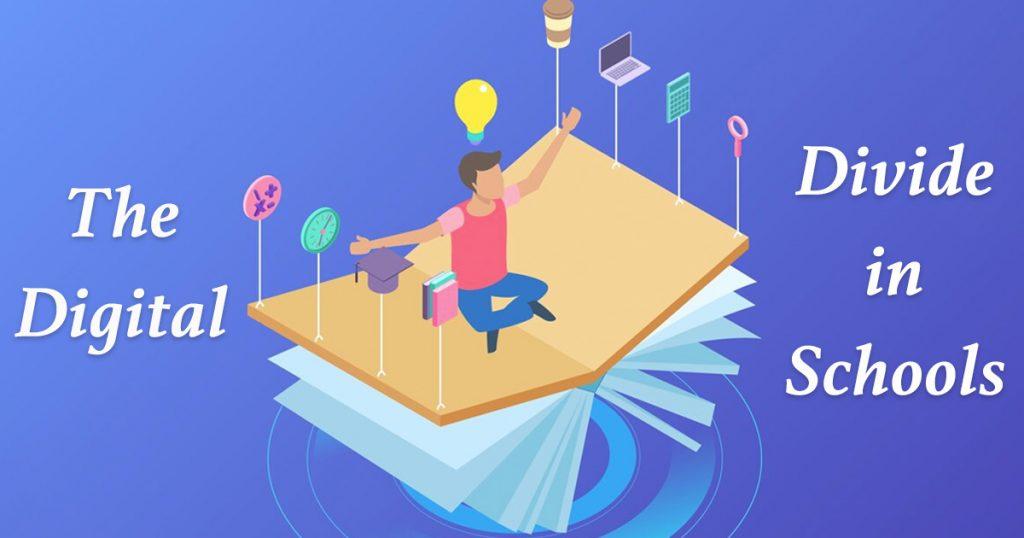Think back to a time before the digital age, when doing everyday tasks took more time and effort. Now, we live in a world where technology makes everything quicker and easier. From smartphones that control our homes to advanced tools that make work more efficient, technology is a big part of our lives today. Many people benefit from these changes, enjoying the convenience and opportunities they bring. But not everyone has access to these benefits.
For people who can’t afford the latest technology, life hasn’t changed as much. This is especially true in education, where not having access to computers and the internet can make it hard for students to keep up. The digital divide is a growing problem, leaving some students at a disadvantage simply because they lack the resources others take for granted. This gap in access can prevent students from getting the quality education they need for a bright future.
Understanding the Digital Divide in Education
Technology is now a crucial part of education, changing how students learn and teachers teach. This was especially clear during the COVID-19 pandemic when schools had to close and switch to online classes. This change made the digital divide in education even more noticeable.
The digital divide is the gap between students who have access to computers and the internet and those who don’t. It’s not just about having these tools; it’s also about having fast and reliable internet and knowing how to use these tools well.
There are clear examples of this divide. In wealthier areas, students could easily shift to online learning because they had what they needed at home. But in many low-income and rural areas, students struggled. Many families didn’t have reliable internet or enough devices for all their kids to use for school. This meant some students couldn’t join online classes or finish their assignments, putting them at a disadvantage.
This situation shows why it’s so important to close the digital divide in education, so every student has a fair chance to succeed, no matter where they live or how much money their family has.
The Impact of the Digital Divide in Education
The digital divide in education brings about several issues, each affecting students in different ways:
Unequal Learning Opportunities
Picture two students—one with fast internet and one without. The student with internet access can join online field trips, use fun learning apps, and attend virtual classes. The other student misses out on these experiences, which can limit their future job prospects since technology skills are becoming more important.
Limited Access to Resources
Imagine a student trying to do a science project without the internet. They don’t have access to online resources like videos, articles, or virtual experiments that could help them learn better. This lack of resources can lead to lower grades and make it harder to compete in tests or apply for college.
Increased Educational Disparities
Some schools have plenty of computers and internet access, allowing them to customize learning for each student. Schools that don’t have these resources can’t do that, so students in these schools might fall behind, not because they aren’t smart, but because they don’t have the same tools.
Reduced Engagement and Motivation
A student who can’t join online discussions or projects because they lack internet access might feel left out and lose interest in school. This can lead to higher dropout rates, affecting their chances of getting good jobs in the future.
Fixing the digital divide is really important. By making sure every student has the tools and internet they need, we can create a fairer education system. This ensures that all students have the chance to succeed, no matter how much money their family has or where they live.
Solutions to the Digital Divide in Education
Bridging the digital divide in education involves several key steps to make sure all students have equal opportunities:
More Money for School Technology
Schools need extra funds to buy things like computers and tablets for students. By providing more money, schools can make sure every student has the tech tools they need for learning.
Cheaper Internet Access
Fast internet is crucial for students to learn effectively. Communities and governments can help by offering low-cost or free internet access, especially in areas where it’s hard to get online. This can include public Wi-Fi spots or cheaper home internet plans so every student can connect.
Teaching Digital Skills
It’s not enough to just have technology; students and teachers need to know how to use it properly. Schools can offer programs that teach important skills like using online resources and staying safe on the internet. These skills are vital for students to succeed.
Partnering with Tech Companies
Schools can team up with technology companies to get more resources and support. These companies can provide training and tools at lower costs, or even for free. Such partnerships can also help create new ways of learning that are more exciting and effective.
Bridging the Gap: Creating an Inclusive Education System
The digital divide in education shows us where traditional schools need to improve. It highlights the importance of making sure all students have equal access to learning resources. By taking steps like providing more funds for technology, offering affordable internet, teaching digital skills, and working with tech companies, we can close this gap.
These changes will help transform our schools into places where every student has the chance to succeed, no matter their background. With these efforts, we ensure that all students are ready for the future, making education fair and accessible to everyone.
